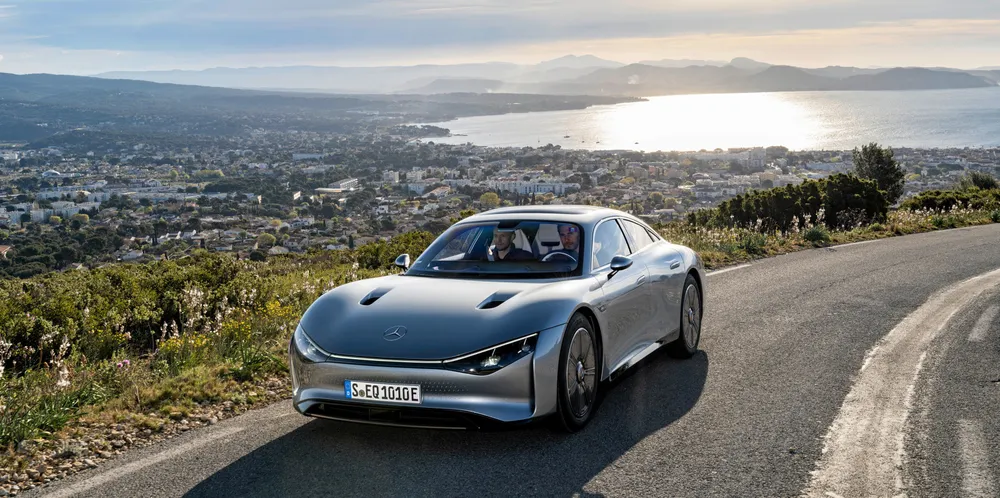Does prototype Mercedes EV kill one of the main arguments in favour of hydrogen cars?
Vision EQXX has real-world range of 1,000km — much longer than fuel-cell competitors — with double the efficiency of existing electric vehicles

In May 2021, Toyota revealed to the world that its new second-generation Mirai fuel-cell car had travelled 1,003km (623 miles) on a single tank — with 9km of range remaining — thus demonstrating the unique selling point of the hydrogen-powered vehicle.
This week, Mercedes revealed that its Vision EQXX battery-powered prototype car had travelled 1,008km on a single charge — with about 140km of range remaining — thus demonstrating that fuel-cell cars should not be boasting about superior range.
Toyota’s 1,000km effort — on a car with an official real-world range of up to 402 miles (647km) — required “an ‘eco-driving’ style but no special techniques that could not be used by everyday drivers”, the company said, but did not say how long the journey made by four different drivers took.
Mercedes’s 1,000km effort — on a vehicle with a claimed real-world range of more than 1,000km — was achieved in eleven-and-a-half hours, on a route across the Swiss Alps that involved roadworks, with an average speed of 87.4km/h (54.3mph).
But perhaps the single most impressive aspect of the Vision EQXX is not its range — after all, there are already several EVs on the market with longer ranges than the Mirai — but its efficiency.
The Toyota Mirai — which has a longer range than its only mass-produced fuel-cell competitor, the Hyundai Nexo — travelled its 1,000km using 5.6kg of hydrogen, a volume that contained 186.6kWh of useable energy. The Mercedes used just 87kWh of electricity on its journey, making it twice as efficient as both its own in-production EVs and Tesla’s long-range Model S.
This means that it would be twice as cheap to run as today’s serially produced EVs.
“Rather than simply increasing the size of the battery, the cross-functional, international team focused on maximising long-distance efficiency,” said Mercedes-Benz. “They pulled out all the stops in drivetrain efficiency, energy density, aerodynamics and lightweight design.”
Yet while Mercedes has no plans for the Vision EQXX to enter commercial production, the company explains: “This new blueprint for automotive engineering has delivered a new benchmark for electric vehicle efficiency and range, and the technology in the Vision EQXX will be deployed in upcoming series-production Mercedes vehicles.”
So if range is no longer a winning argument for fuel-cell cars, what is?
They certainly don’t win on costs — with both the Mirai and Nexo being more expensive to buy than comparable EVs, and three to ten times dearer to run than an electric car charged at home.